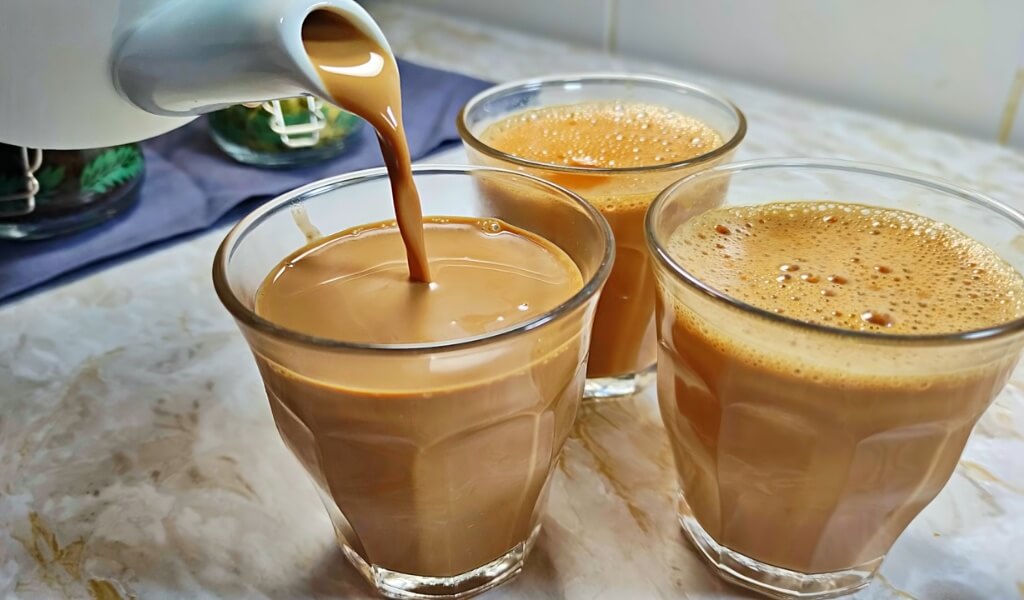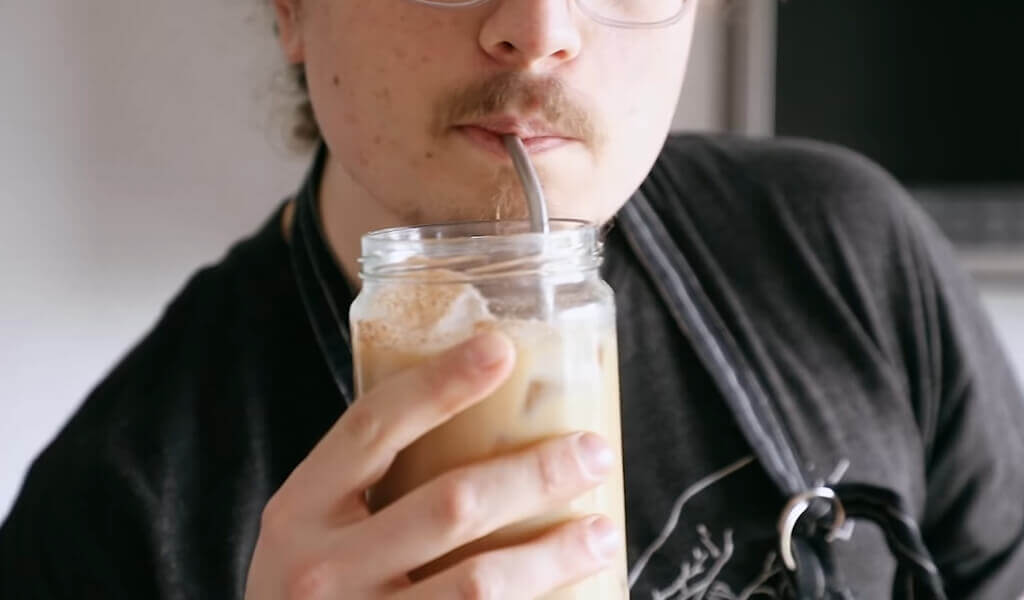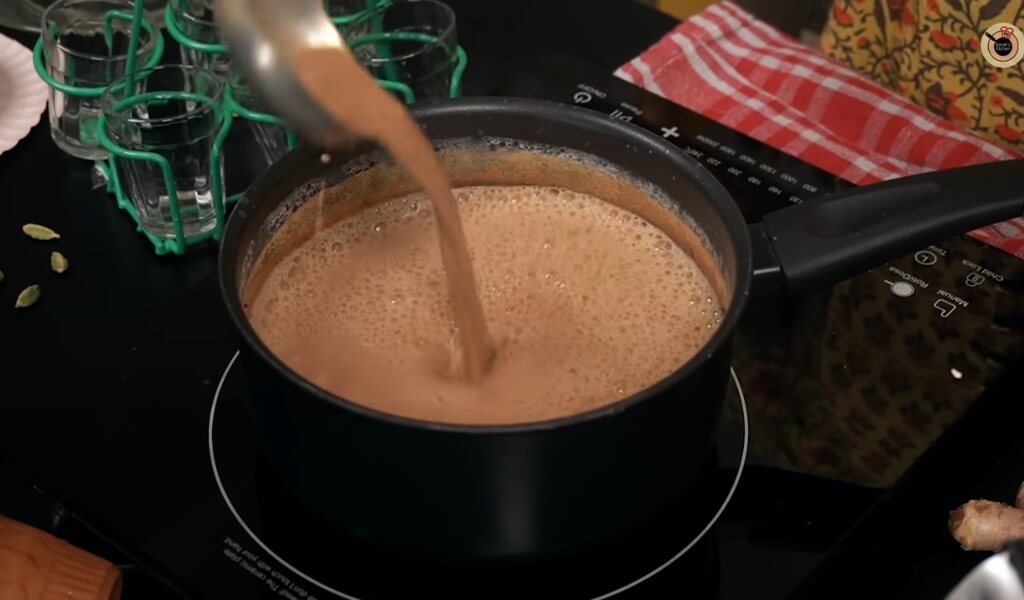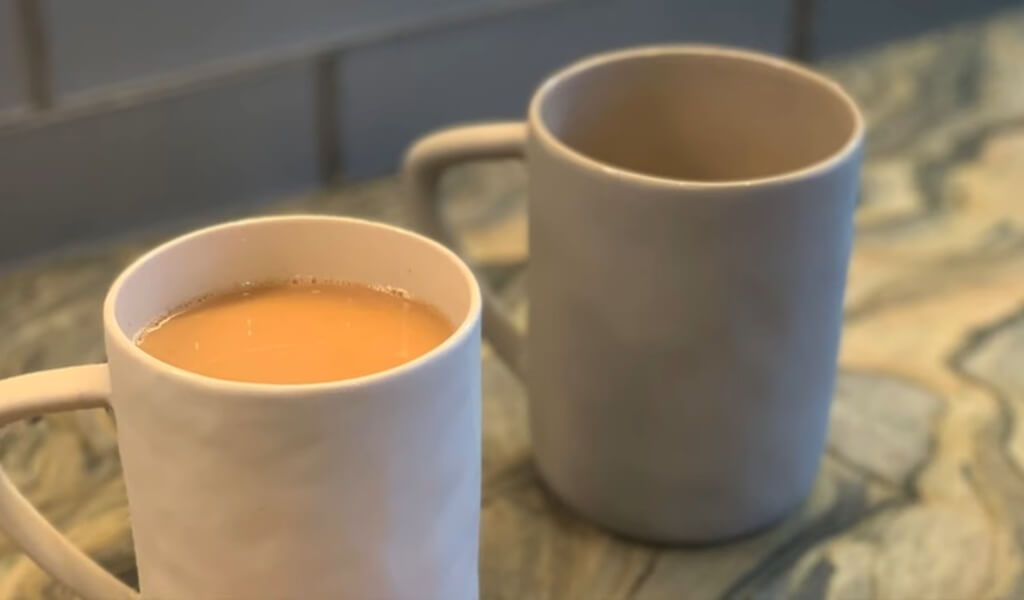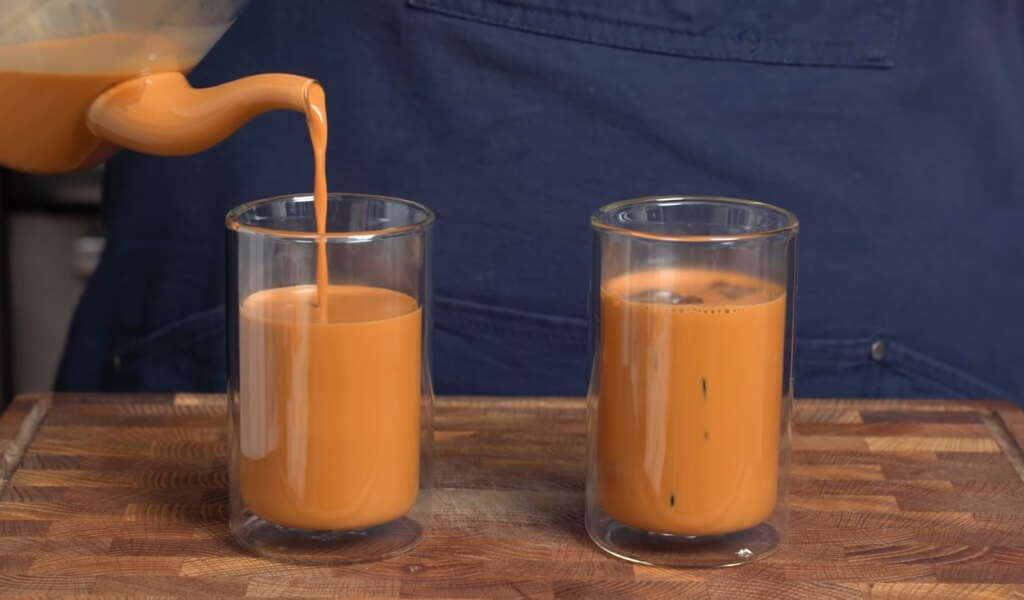What is Chai tea? Welcome to a compelling exploration of the captivating elixir known as Chai tea.
Prepare to immerse yourself in a rich tapestry of flavors as we unveil the secrets behind this aromatic brew. Chai tea, with its exotic blend of spices, is a beverage that has captured the hearts of tea enthusiasts worldwide.
In this article, we will unravel the origins of Chai tea, its unique ingredients, and the art of brewing that yields its irresistible charm. Join us on a flavorful journey as we unravel the mysteries and indulge in the pleasures of chai tea.
Quotes of tea with You
“The first sip is joy, the second is gladness, the third is serenity, the fourth is madness, the fifth is ecstasy.” – Jack Kerouac
What is Chai Tea?
Chai tea has a fascinating and rich history that brings people together. “Chai” actually means “tea” in Hindi, which comes from the Chinese word “cha.” In this context, chai is a delightful blend of spices brewed into a comforting, tea-like beverage.
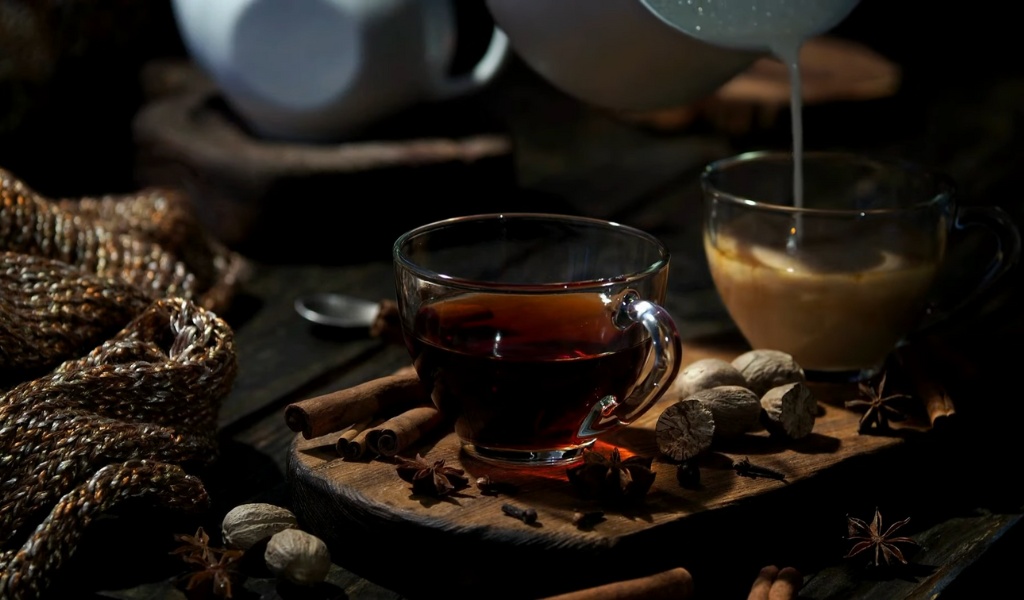
The recipes for chai can vary significantly across continents, cultures, and even families, making it a truly unique experience.
It’s worth noting that the chai tea we enjoy today in cozy coffee and tea shops is quite different from its original Indian roots. However, it still carries the essence of warmth, comfort, and togetherness that has been cherished for generations.
As chai tea becomes more popular, I’ve observed that many Western tea enthusiasts mistakenly call milk tea “chai teas” or “chai lattes.” The word “latte” is derived from Italian and simply means milk. In contrast, a café latte combines espresso and milk, much like the French grand crème, the German Milchkaffee, and the global cappuccino.
So, what is chai tea made of? Chai recipes differ globally, reflecting diverse continents, cultures, towns, and families. However, a typical spiced tea blend commonly comprises black tea combined with potent spices such as cinnamon, cardamom, cloves, ginger, and black peppercorns.
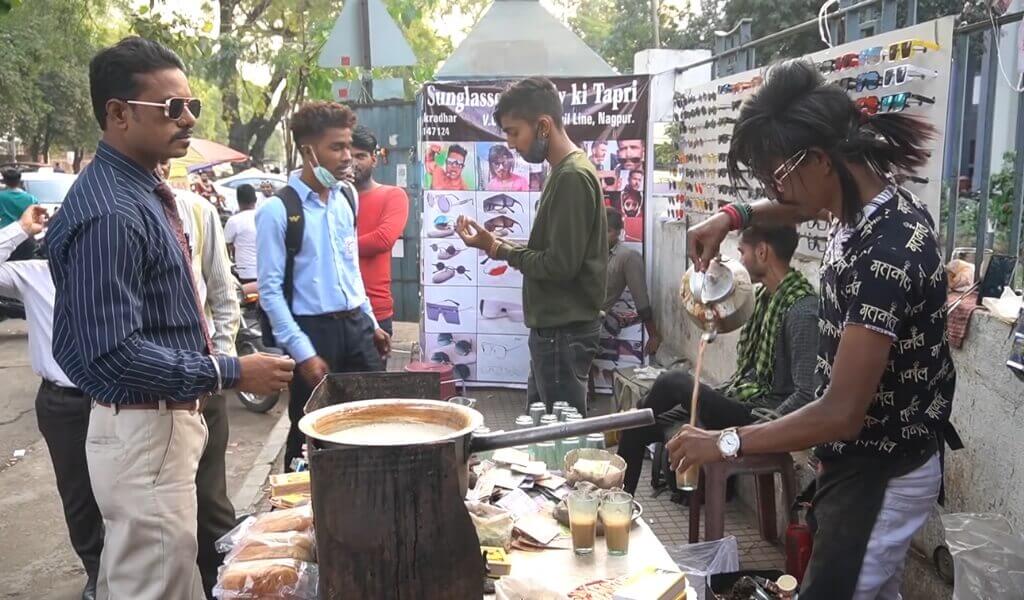
A chai latte is a blend of tea and milk made by pouring a tea infusion into a glass of hot milk. Chai tea latte recipes usually use an infusion of black tea with spices like pepper, ginger, cloves, cardamom, and star anise. As someone with experience and expertise in chai, I can say that this recipe sounds similar to the Indian masala chai but with a twist. Pouring the tea infusion into milk instead of boiling them together is an unconventional approach in traditional Indian chai preparation.
Nowadays, I see more Indians exploring different tea varieties beyond just chai. Tea has become a broader term, encompassing black, green, white, and blended teas. How each person steeps and enjoys their tea is a personal preflattese – some might add a splash of milk, while others squeeze in lemon or sweeten it with honey or sugar. Strong black teas can easily accommodate milk, but greens and whites are best enjoyed plain and unsweetened.
Chai tea origin
According to legend, chai has a history of over 5,000 years. A king in present-day India requested the creation of a spiced beverage with healing properties for Ayurveda, an ancient medicinal practice that utilizes herbs and spices for therapeutic purposes.
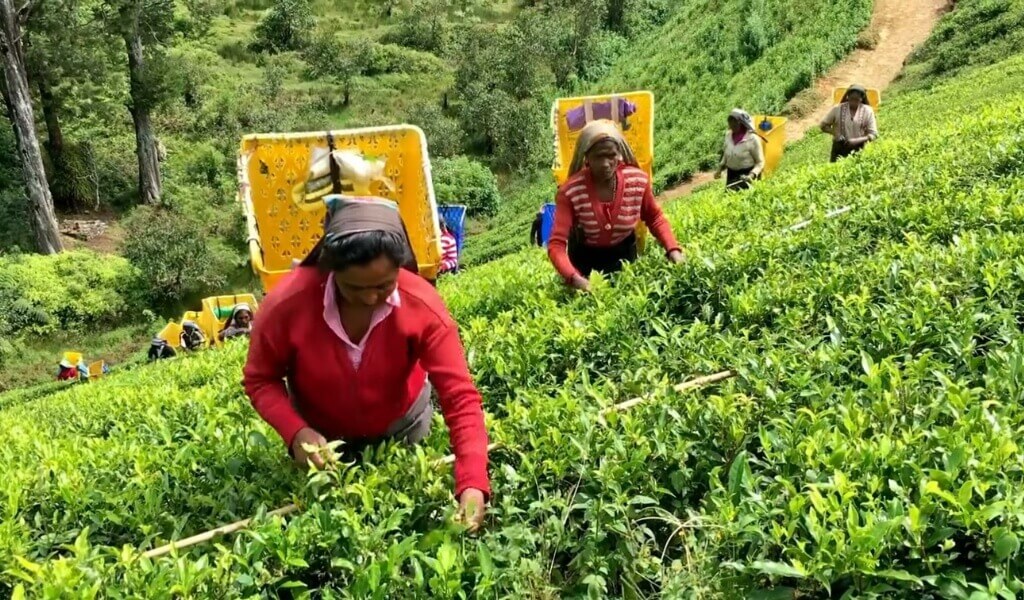
Legend has it that an Indian king once commanded the concoction of a magical, spice-infused elixir to aid in Ayurveda, an ancient healing practice rooted in the power of herbs and spices.
Ginger and black pepper boost digestion, cloves soothe and disinfect, cardamom lifts your spirits, cinnamon enhances circulation and breathing, and star anise freshens your breath.
As this healing beverage spread across India, various spices were used to prepare the drink, depending on the region or neighborhood where it was made.
Interestingly, the original versions of “masala chai,” or “spiced tea,” didn’t contain any Camellia sinensis tea leaves. Milk and sugar were also later additions to this famous drink.
Black tea, milk, and sugar gained popularity in the mid-1800s when the Camellia sinensis assamica tea plant was found in India. British rule in India led to the cultivation of this plant, and their fondness for robust black tea with milk and sugar shaped the chai tea we enjoy today.
Read More:
- What is Neem Tea: Origin, Use, Flavor and How to make
- What is Lemongrass Tea? 🌱Origin, Nutrition and how to drink
- What is Tulsi Tea? Grows, History, Used & Storing
- What is Hibiscus Tea? Discover the drink that captivated millions
- What is ginger tea? Things You didn’t know about it
- What is Chamomile Tea? Everything You need to know
I think you would love to know.
What is in chai tea?
Originally, chai spices in India mainly consisted of cardamom, ginger, cloves, cinnamon, and black peppercorns. Additional spices like vanilla, nutmeg, mace, star anise, and fennel were occasionally used. As chai spread to the west, bay leaf, allspice, cacao, and saffron gained popularity as well.
Chai tea is a wonderfully diverse beverage, with recipes varying from town to town and family to family. There’s no one-size-fits-all recipe for chai, but it typically consists of these key chai tea ingredient categories:
Tea
Indian Assam and Darjeeling black teas are popular choices for a chai base. However, you might also come across chai made with various green teas, the South American herb yerba mate, or the South African herb red rooibos. Even completely herbal blends are made only from spices, containing no tea leaves.
Sweetener
White sugar, brown sugar, and honey are common chai sweeteners, but you might also find other sugars like demerara, turbinado, or coconut sugar. Jaggery, an unrefined cane sugar, is a popular choice in parts of India.
Milk
Traditional Indian chai is often made with buffalo milk. The Western version we’re more familiar with is typically made with cow’s milk or dairy alternatives like soy, almond, rice, or coconut milk. You might even find yak or goat milk in chai in other parts of the world. Some recipes call for steeping a strong chai in water and then diluting it with milk, while others have you simmer the chai spices in a mixture of water and milk or in all milk.
Spices
The spices, or “masala,” used in chai can vary by region, climate, and personal preference. Traditionally, cardamom, ginger, cloves, cinnamon, and black peppercorns were dominant chai spices, all readily available in India.
You might also find vanilla, nutmeg, mace, star anise, or fennel in some traditional recipes. As chai moved westward, bay leaf, allspice, cacao, or saffron became popular additions. Even coriander and cumin might show up in some recipes.
With so many different takes on chi tea, you might still wonder, “What is chai tea?” This incredible diversity of ingredients makes chai such a captivating drink and keeps you coming back for more!
What kind of flavor do these ingredients create? The answer is in the next section..
What are the tasting chai?
The incredible variety of chai recipes means the beverage can have many different flavors, depending on the ingredients used. It leaves a fiery bite when I try chai heavy on the ginger and black peppercorns.
On the other hand, those containing more vanilla, cinnamon, or nutmeg tend to leave a sweeter note. Chai with saffron or cacao may impart an earthy bitterness, while those using fennel or cumin can have a more savory note.
Detailed Chai Nutrition
Regarding chai tea’s nutrition, it’s good to know what you can expect from a typical cup (8 ounces). Generally speaking, a cup of chai contains:
- 120 calories
- 3.8 grams protein
- 2.3 grams fat
- 21.5 grams carbohydrates
- 0.24 grams fiber
- 21 grams sugars
- 48 milligrams sodium
- 21.6 milligrams caffeine
It’s important to remember that chai tea has multiple ingredients and can be prepared using various types of milk, so its nutritional content may vary. Depending on the chai mix and preparation method, it could also contain:
- Antioxidants and vitamins A and K from black tea
- Potassium, calcium, and magnesium from cardamom
- Calcium and magnesium from cinnamon and cloves
- Protein, calcium, and vitamin D from milk
The exact amount of these nutrients in your chai tea will depend on the proportions of each ingredient used. And, of course, if you’re sipping on a larger cup of chai, you’ll get more nutrients, including calories, sugars, and fat. For example, a grand size (16 ounces) would contain roughly double the abovementioned amounts.
So, enjoy your chai tea and feel good knowing it’s packed with various nutrients!
Use: Key Things To Consider
As a Chai tea lover, I’m excited to highlight its numerous health benefits. Chai tea is rich in antioxidants from both the black tea and the assorted spices it contains, which can shield your body from harmful free radicals and oxidative stress.
The spices in Chai tea are not only flavorful but also have potential health benefits. For example, ginger and black pepper aid digestion, while cardamom and cinnamon may have immune-boosting properties. Chai tea generally contains less caffeine than coffee, making it an excellent alternative for those who want a comforting warm drink without the jitters.
Note: Chai tea typically contains less caffeine than coffee but more than most herbal teas.
Types
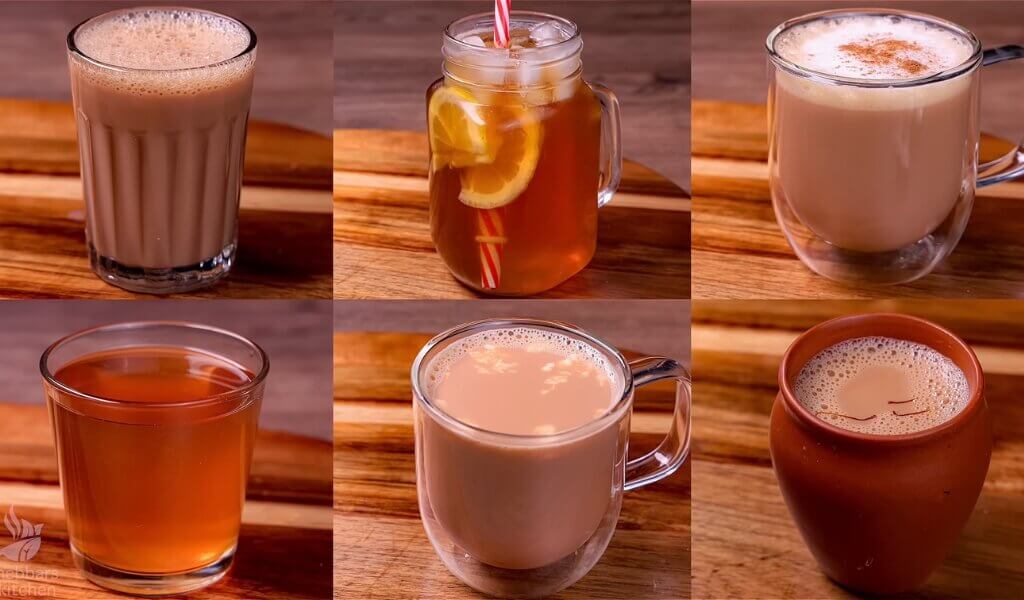
I’d love to introduce you to some of the most popular types of chai you can find across India:
Masala Chai
This tea is spiced with Indian flavors and is perfect for cold mornings. Common spices include cardamom, clove, black pepper, cinnamon, ginger, and nutmeg. Recipes may use some or all of these spices in varying proportions.
Adrak or Ginger Chai
A hot favorite, especially during winter, Adrak chai adds grated ginger to the tea while brewing. It’s considered an elixir for colds because of ginger’s reputation for clearing sinuses.
Elaichi or Cardamom Chai
Another popular choice, this chai, uses freshly ground or powdered cardamom. It has a sweet taste from the cardamom and is a refreshing option. Cinnamon can also be added, either grated or powdered.
Bombay Cutting Chai
Famous in Mumbai or Bombay, Cutting Chai gets its name because the flavor of the tea is said to be so strong that a half-glass only serves it. It’s a modified masala chai served in small ‘cutting glasses’ instead of cups and is best loved by ‘tapirs’ or roadside tea stalls.
Kashmiri Kahwa
Originating from Kashmir, this traditional green tea is prepared with exotic spices. The signature flavor of Kashmiri Kahwa comes from saffron strands included in the blend. Cardamom, almonds, cinnamon, and cloves are also added to the tea. It’s best served during brunch hours.
Sulaimani Chai
Also known as ‘Ghava’ or ‘Kattan Chaya,’ this black tea has its roots in South India. Sulaimani is black tea with lemon and is best enjoyed after a heavy meal, as it aids digestion.
Tulsi Chai
Known for its health benefits, Tulsi Chai uses one of India’s most sacred herbs – holy basil. Fresh tulsi leaves are added to the brew, strengthening the immune system and relieving stress. This chai can be prepared with or without milk; the ideal time to consume it is in the morning.
What Are The Preparation Methods?
When preparing Chai tea, I’ve tried various methods over the years, but I have to say that nothing beats the traditional stovetop method. In India, skilled chaiwallahs create the perfect blend of tea, spices, milk, and sweeteners right in front of your eyes.
To make Chai tea at home, I recommend starting with a black tea base, adding a blend of your favorite spices, and then simmering it with milk and your preferred sweetener. Once you’ve mastered the basics, experiment with different tea blends or even non-dairy milk alternatives.
For busy folks or those seeking a speedy choice, instant Chai tea blends offer convenience. Just mix with hot water or milk, and enjoy a tasty Chai tea in no time. Be mindful that some instant mixes contain extra sugars and may lack authentic flavors, so check the labels and select one that matches your taste.
Chai Pairings
When I was little, it took me some time to warm up to all the different spices in chai. However, I instantly fell in love with the snacks served alongside chai. These snacks are a delightful mix of sweet and spicy treats, often fried and perfect for dipping. Some of my favorites include:
| Favorites | Describe |
| Green Pea Samosas (Hare Mutter Ki Samosa) |
These are deep-fried pockets filled with spicy potatoes and peas—it’s tough to eat just one.
|
| Parle-G |
Sweet, rectangular, and incredibly dunkable cookies that soak chai perfectly. Look for the package featuring a cute kid on it. Other types of biscuits or cookies are also very much acceptable.
|
| Tiny Sandwiches |
These are usually made with white bread and simply stuffed with vegetables like cucumbers and onions, sometimes chat masala, and if you’re lucky, ketchup. True story: I love ketchup sandwiches.
|
| Pakora |
Deep-fried spicy vegetables—think tempura, but even better.
|
| Murukku |
These crunchy fried snacks are made with rice and lentil flour. Trust me, and you won’t be able to stop wanting these.
|
According to Sharma, the accompaniments with chai can vary depending on the occasion or time of day. In the morning, you might enjoy chai with bread or sandwiches; in the evening, the snacks might include biscuits and pakora; if guests are over, samosas will likely appear.
Chai Tea vs. Other Tea Types
I often get asked how Chai tea compares to other tea types, such as green tea, oolong tea, or herbal tea. While each tea type has a unique flavor profile and health benefits, Chai tea stands out for its bold, spicy taste and comforting warmth. Unlike the milder flavors of green and oolong teas, Chai tea offers a more robust and refreshing experience, thanks to its blend of spices and black tea base.
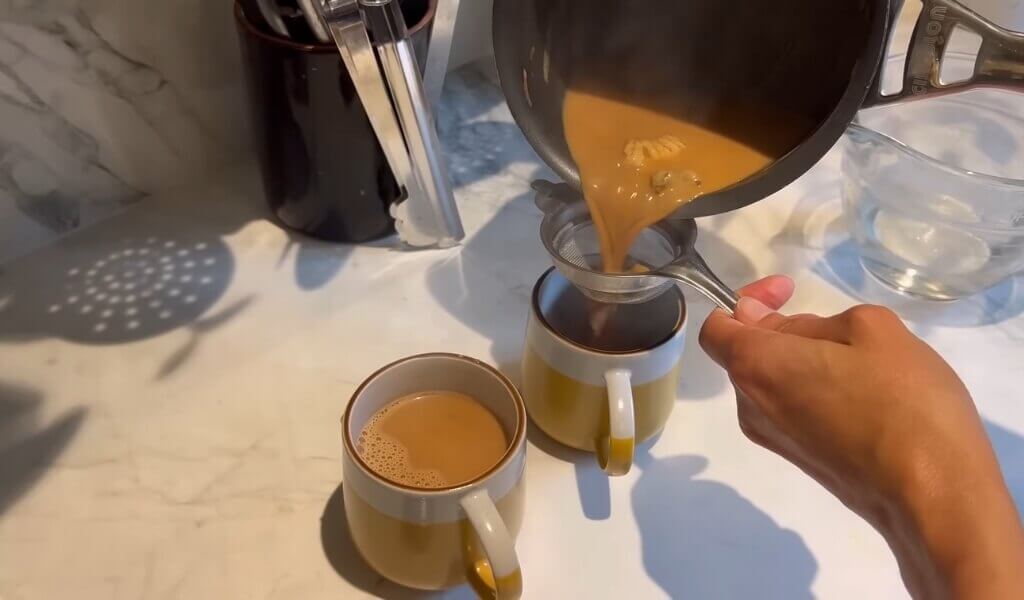
On the other hand, herbal teas can be made from various ingredients, including fruits, flowers, and herbs. While some herbal blends may share similarities with Chai tea, they typically do not contain any tea leaves, meaning they’re caffeine-free and have different health benefits.
Pairing Chai Tea with Food
One of my favorite aspects of Chai tea is its pairing with various foods. In India, Chai tea is often enjoyed with traditional snacks like samosas, pakoras, and biscuits. Chai tea’s bold flavors and spices beautifully complement these delicious treats’ savory and sometimes spicy profiles.
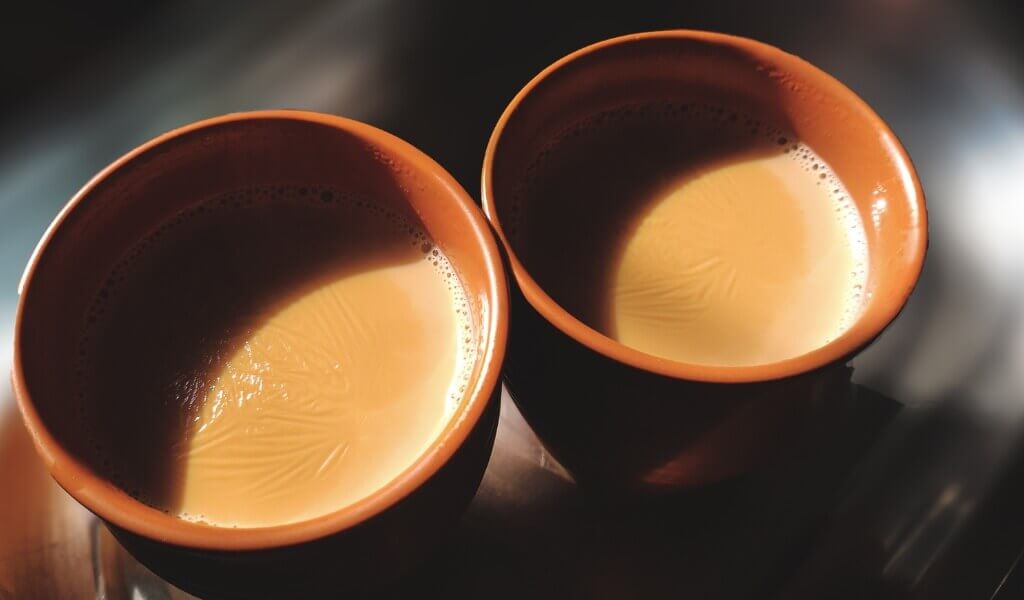
When I enjoy Chai tea at home, I love to pair it with foods with complementary flavors and textures. Think pastries with warm spices like cinnamon, nutmeg, or a rich, dense chocolate cake slice. The possibilities are endless, so don’t hesitate to get creative with your Chai tea pairings!
Chai Tea in Popular Culture
As a long-time Chai tea lover, I’m thrilled to see how this flavorful drink has gained popularity and made its mark on popular culture. Over the years, Chai tea has made its way from the bustling streets of India to cafes and homes worldwide. In Western countries, variations like the Chai latte have become a staple in many coffee shops, with people embracing the warmth and comfort of Chai tea.
Chai tea has gained worldwide popularity, appearing in movies, books, and media, cementing its status as a beloved global beverage. Celebrities and influencers frequently express their fondness for Chai tea, inspiring more people to try it. Whether in traditional ceremonies or contemporary variations, Chai tea has captivated both avid tea lovers and casual drinkers.
As Chai tea grows in popularity, I can’t wait to see what new blends and innovations the future holds. Whether you’re a seasoned Chai tea enthusiast or just starting your journey, there’s always more to discover and enjoy regarding this versatile and comforting beverage. So, go ahead and brew a cup of Chai tea, embrace its rich history and vibrant flavors, and join the ever-growing community of Chai tea lovers worldwide.
How to drink and enjoy chai tea? Complete consideration
When drinking chai tea, I enjoy it in a cozy and relaxed setting. First, I prepare the chai by brewing it with the perfect blend of spices, milk, and a sweetener. Once it’s ready, I pour it into my favorite mug or teacup.
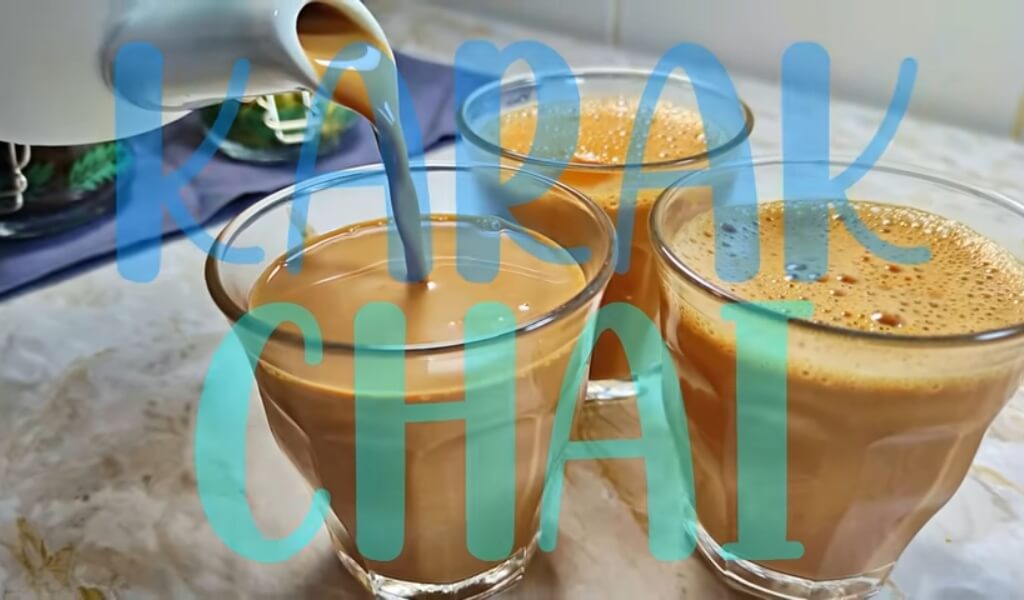
Sipping chai tea slowly allows me to savor each delightful flavor, from the warm spices to the subtle sweetness. Sometimes, I like to pair my chai with a tasty snack, like biscuits or samosas, to enhance the experience even more.
Ultimately, the best way to drink chai tea is to take your time, embrace the unique flavors, and allow it to bring a sense of warmth and comfort to your day.
How to buy and store chai?
Like any other tea blend, a chai blend won’t exactly go “bad,” but it can become stale. I recommend buying your chai from a trustworthy company that can provide information on when and how the chai was processed and packaged. By following these storage tips, your chai tea blend can stay fresh for up to a year:
- Make sure to store your tea in a cool, dark place.
- Keep your tea away from heat, light, oxygen, and moisture; never put it in the refrigerator.
- Your tea will last longer if stored in an opaque, airtight container.
- Finally, don’t let your tea share pantry space with items like coffee and spices, as they can leach their flavor into the tea leaves.
Remembering these tips, you’ll always enjoy the freshest chai possible.
What’s the difference between chai tea and a chai tea latte?
If you’ve ever been stumped by the choice between “chai tea” and “chai tea latte” on your local coffee shop menu, don’t worry; I’ve been there, too. Although they sound pretty similar, the two have a crucial difference. Chai tea is made with heated milk, while lattes involve steamed and frothed milk.
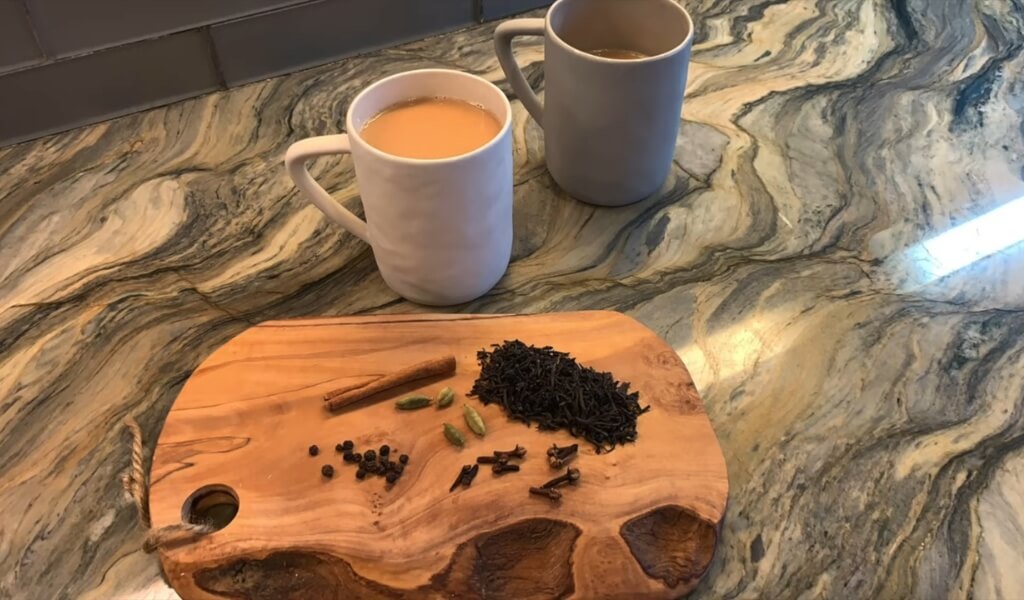
Most coffee shops use the steam wand on an espresso machine to steam and froth the milk with hot water vapor. But as someone with experience in this field, I can assure you that you can achieve similar results at home without any fancy appliances. You only need a milk frother, immersion blender, French press, or a mason jar to shake up that frothy foam.
This step is crucial. Frothing the milk agitates the liquid, breaking down (denaturing) the proteins and forming air bubbles. This process gives the drink a thicker texture, making the milk milder and sweeter. Plus, you can show off your artistic skills by creating beautiful latte art as you pour the foamy delight into your chai.
Thanks for spiriteadrinks.com
FAQs
Is chai tea better for you than green tea?
Both teas are rich in flavonoids—green tea has more catechins, while chai has more theaflavins and thearubigins. These flavonoids help with cellular communication and prevent illnesses from spreading.
What is the traditional Chai tea made of?
Traditional Chai tea is made with a black tea base, a blend of spices (such as cardamom, cinnamon, cloves, ginger, and black pepper), milk, and a sweetener like sugar or honey. The exact ingredients can vary based on regional and personal preferences.
What are some popular Chai tea variations?
Some popular Chai tea variations include Masala Chai (spiced Chai), Vanilla Chai, Chocolate Chai, and Chai lattes. These blends offer unique flavor combinations, and you can also experiment with different tea bases or non-dairy milk alternatives.
Is Chai tea healthy?
Yes, Chai tea has several health benefits, thanks to its antioxidant-rich black tea base and the various spices used in the blend. These ingredients may help protect against free radicals, support digestion, and boost the immune system. However, adding large amounts of sugar or sweeteners can reduce the health benefits.
Can I make Chai tea at home?
Absolutely! Making Chai tea at home allows you to customize the flavor and strength. Start with a black tea base, add your favorite spices, and simmer with milk and a sweetener. Once you’ve mastered the basics, experiment with different ingredients and brewing techniques.
What foods pair well with Chai tea?
Chai tea pairs wonderfully with traditional Indian snacks like samosas, pakoras, biscuits, and pastries featuring warm spices like cinnamon and nutmeg. You can pair Chai tea with rich, dense desserts such as chocolate cake. Feel free to get creative and explore different food pairings that complement the bold flavors of Chai tea.
How has Chai tea become popular in Western countries?
Chai tea has gained popularity in Western countries through its presence in cafes, coffee shops, and specialty tea stores, with variations like the Chai latte becoming a staple menu item. The spread of Chai tea in popular culture, such as movies, books, and social media, has also contributed to its growing popularity worldwide.
How do organic certifications relate to Chai tea?
Organic certifications ensure that Chai tea is produced without synthetic pesticides, herbicides, or chemical fertilizers, promoting environmental sustainability and a healthier product. Look for certified organic Chai tea to make a responsible and health-conscious choice.
Pictures of Chai Tea
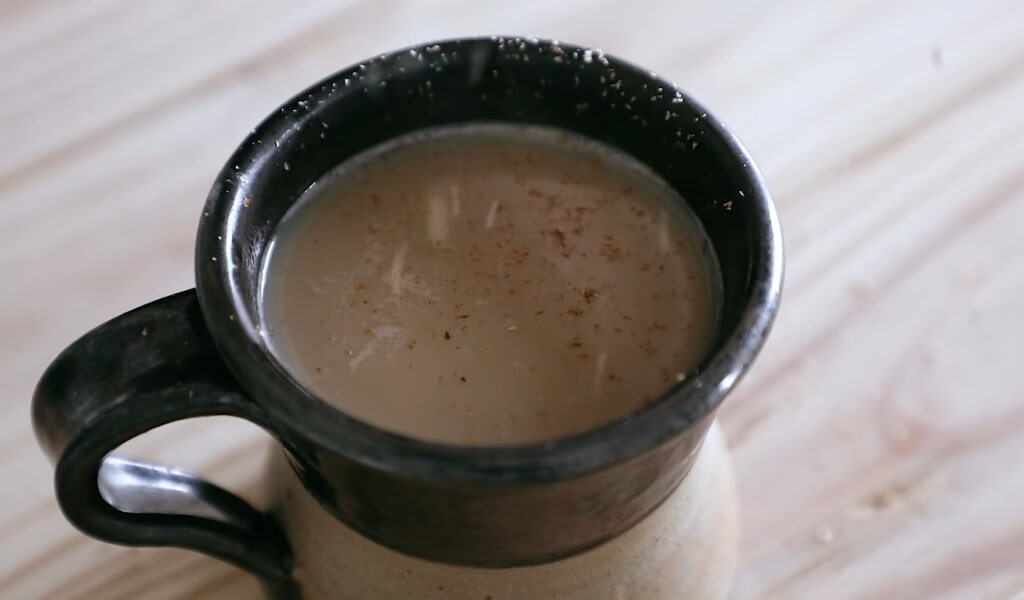
I’m Shanna, creator of Spiritea Drinks. I’m all about teaching people to grow their own food, tea, cook what they harvest, and eat with the seasons.

